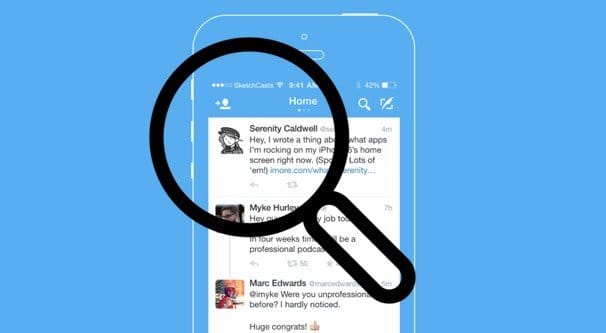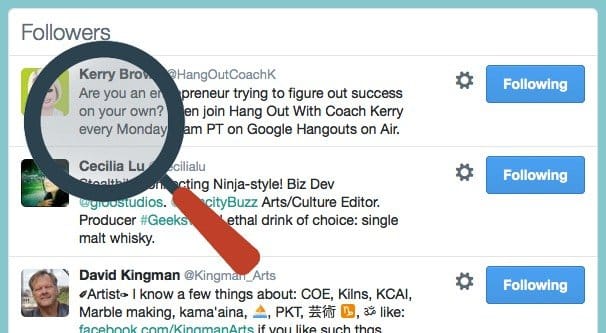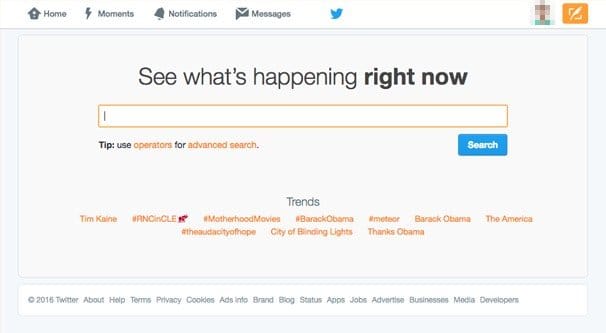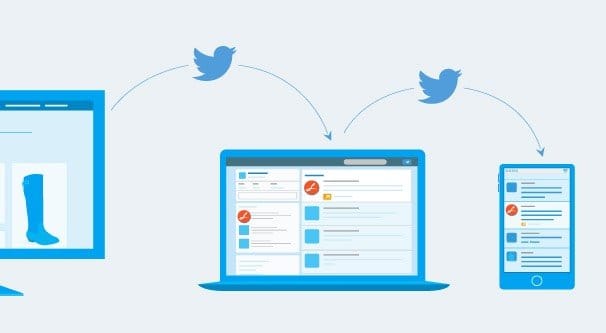 Written by ContentPowered.com
Written by ContentPowered.com
Twitter is a fickle platform. A few mistakes can cost you thousands of followers. A bad product launch can turn a devoted following into a rabid mob. There are all sorts of ways to get ahead, and a lot more opportunities to blow it along the way.
I’m not here to talk to you about how to avoid blowing it, or how to recover from doing so. Rather, I’m taking a different perspective today. Rather than assuming you’re on the negative side of things, I’m going to assume your competitors are. You’re going to be waiting in the wings, looking to capitalize on any mistake, to steal their Twitter followers for your own. Ideally, that leads to stealing their customers as well.
Actively Use Twitter
The thing with all of the strategies in this post is that they require you to have an active, good Twitter presence. That means you need to have a reasonable username. You need to have a profile picture and cover photo that are compelling and represent you. You need to have a reasonable number of real followers, not fake followers. You need to be active on the site, both in terms of posting and in engaging with your followers.
You need to have that baseline set up, because you’re trying to steal followers. If the follower of your competitor looks at your profile and sees a thin page with barely any interesting content, just a string of self-promotional blog posts, they’re probably going to pass. Sure, a few might switch over, but it’s purely out of malice towards your competitor, not because you’re offering any security that you’re better.
Unfortunately, that means if you’re going into this as a brand-building strategy, you’re going to have a hard time. You need the critical mass to have enough social gravity to attract scorned follower, and you don’t get that from minimal site usage.
Identify the Targets
Every business has competitors. For every Google there’s a Bing. For every Nike there’s a Reebok. For every Coke there’s a Pepsi. Your business is no different. Your job here is to identify who you’re targeting with these techniques.
The first thing you should do is brainstorm a list of every competitor you can think of. For some brands with unique products, this can be a pretty short list. Uber doesn’t have a lot of ride-sharing competition, right? For others, like anyone selling products via dropshipping or resales, there could be thousands. Don’t worry; you’re not necessarily targeting them all.
Next, you need to take your list and perform one important filter: finding those who are actually on Twitter. Now, some will not be on Twitter, but will be big enough names that people still talk about them on Twitter despite not being able to interact with a profile. Keep these around as well. They’re ripe targets.
Next, do a few basic searches. Look for disgruntled fans. Some brands might not have many at all; those can be left as low priority in your list. Others will have plenty of complaints. Mark these as high priority.
Determine Your Offers
Now, in order to lure people over to your side, you need two things; the promise that you can solve their problem, and an incentive to get them to switch.
The promise is easy, but it’s a simple yes or no. If a customer is complaining that your competitor doesn’t do X, that’s an opportunity to step in, but only if you do X. If you don’t do X either, then stepping in to attract the customer won’t work, because you won’t solve their needs either.
As for the incentive, I like to set up a bonus for people converting from another service. You see this pretty often in the insurance world, for example. Car insurance providers offer incentives or bonuses when you switch from another provider, on top of what you presumably save in the switch. Come up with a similar sort of offer, something you can give to these people if they switch, and make a landing page for it. In addition to giving folks some custom support and direction, you’ll be linking them to this landing page for their conversion to your software.
As an added bonus, if you can figure out a quick and easy way to change services – which might involve transferring data or changing file formats for some pieces of software, for example – do so. The smoother the transition is, the more people will convert, and the better their retention will be.
Learn and Love the Search
Remember those searches you did for your competitor brands? Time to really dig into them.
Start at the top of your list for the highest priority brand you could find. Generally, this will be the one closest to what you’re offering, with a similar price point and similar features, but you know your offering is better. Search for their brand name and see what comes up.
What you’re looking for are people who are sassing the brand, or are talking about how they don’t like the brand or have issues with the brand. When you find these people, look at the date of their post. If it’s within the last week, you have a good opportunity.
Before you proceed, look at the replies to their tweet. Did the original brand reach out to them, and did they respond in a positive manner? If they did, or if their subsequent tweets talk about their problem being solved or the brand customer service being great, drop the lead. They’ve been re-hooked by the competition, so you’re not going to get in.
If, on the other hand, their problem is still open or they have posted escalating tweets about how it’s making them angry, it’s a great time to step in. Drop them a comment acknowledging their issue and explaining that your product can fix it. Don’t go all-in with the incentive yet, make sure they’re interested enough first. You don’t want to devalue your offer by throwing it to anyone at all.
From there, how you hook the lead will depend on their willingness to hear you out, their ability to convert, and your ability to provide them with what they need.
Each time you tweet at a prospective lead, you will need to go back to the search and keep looking for more. Some brands won’t have many, some will have plenty. When you scroll back a couple weeks in the search feed for a brand, that’s far enough. Complaints that are too old are stale and are less likely to give you value. Users will wonder why you’re bringing up something so old. Either way, switch to the next brand on your list when you’re done.
Once you have gone through your entire list, set up monitored searches. There are a thousand ways to set up search monitors, so find one that works for you. You can even just check them all manually every couple of days, if you prefer. The idea is to be active and responsive with finding customer complaints and acting on them, as if they were complaints about your own business.
Finding Influencers
Next up is a different strategy. First, go hit up Twitonomy. It’s a great free set of analytics for Twitter that work for your account, but can also give you some great competitive intelligence.
Next, you need to go to Twitter and create a private List. Lists are like feeds of select users you don’t have to be following, but still want to track. You’re going to populate this list with people you find on Twitonomy when you search for your competitors accounts.
- Find the most engaged users for the competitor. These are the people who are most replied to, most mentioned, and most likely to interact with the brand. From this list, remove anyone who actually works for the competitor. You don’t want to try to steal a follower only to find they’re the CEO, do you?
- Look at the lists your competitor’s accounts are on. Each list has someone who created it and manages it; these people should also be targets, because they’re likely to be interested in the industry at the very least, and probably followers of the brand. Ideally, you’re looking for the lists that have large numbers of subscribers.
- Any other influencer or highly followed member of the group of people following your competitor.
Take some time to slowly tweet to these users. Watch their feeds and, when they ask questions, take a moment to answer them. If they have problems, reach out to solve them. If they’re just a casual blog account, help them out with some shares and comments. Everything you’re doing is focused on getting their attention and getting them to look into your account and your business. It’s just up to your business to be convincing enough to convert them into followers.
Advertising Snipes
One common piece of advice for pay per click advertising – which goes for Google, Facebook, Twitter, and a whole host of other ad networks – is to always run ads for your own brand. There are two reasons for this.
The first reason is because there will always be people looking for your brand. If you can capture this traffic by running ads for those keywords, they will be exposed to your ads, which will generally be more beneficial than just being exposed to your organic results.
The second reason is so that other brands can’t snipe the ad space. How would Pepsi feel if they did a Google search for their own brand name and saw the sponsored results were full of advertising for Coke?
This is what you’re going for. Check in with Twitter ads and see what it looks like if you try to buy ads for that brand. You can target their brand name, but you don’t have to stop right there.
In addition to running ads targeting their brand name as a keyword, you can run ads targeting specific keywords they target. If they’re running ads on any platform, you can use research to find out, and you can target those keywords with your campaigns to try to outplay them.
Another form of competitor ad sniping you can do is audience sniping. On Twitter, one audience parameter you can use is follower targeting. You plug in a username and your ads will be targeted at their followers. This is a quick way to run ads targeting your competitors, with ad copy that points out a common problem and shows how you can solve it. This way, when someone happens to be looking at Twitter and follows that brand, they’ll see that you can fix what is probably a common annoyance for them. Ads are great that way.
You can also use contextual targeting, which is all about keywords, but only when those keywords are used. User timeline and search result keyword targeting allows you to put your ads in the feeds of people, but only when those people actually use those keywords. It’s great for targeting those specific issues with competitor problems you’ve identified; a narrower target audience to be sure, but one that is a lot more likely to convert.
Finally, you can add in a lookalike audience as well. For this, you’re going to be targeting people who share similarities to the audience you’re targeting, but not actually that audience. Ideally, these people will be actively looking for something similar to your product, and you’ll be able to reach them with your ads.
Twitter lookalike audiences are, unfortunately, not quite as valuable as lookalike audiences on Facebook. Facebook has a lot more data to work with and can produce much closer lookalike audiences. Of course, nothing stops you from using all of these same techniques on Facebook as well.






